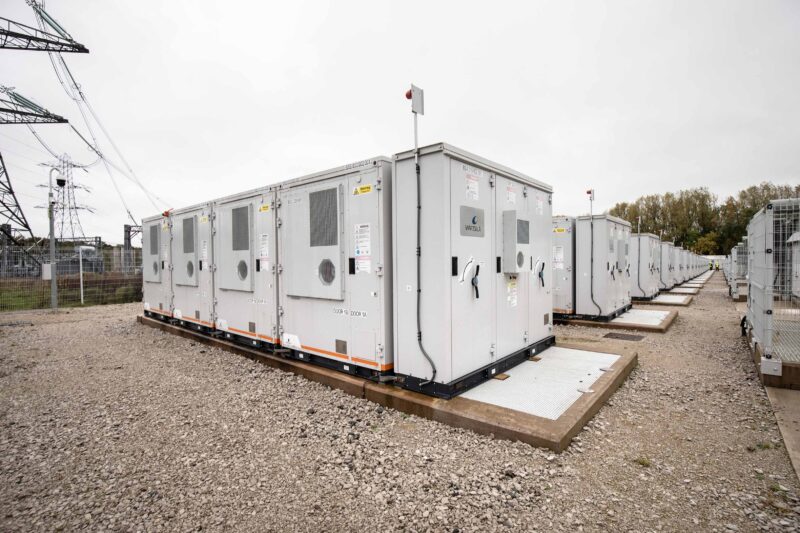Sign up for daily news updates from CleanTechnica on email. Or follow us on Google News!
Energy storage has grown rapidly in Chile in recent years to support the country’s goal to decommission all of its coal plants and transition to 100 percent renewable energy by 2040. According to BloombergNEF, Chile is on track to deploy 237 megawatts / 1,185 megawatt-hours of energy storage projects in 2023. Cumulative energy storage deployments are predicted to reach about 12 gigawatt-hours by 2030. However, the long-term success of the sector largely depends on increased transparency for capacity payments for energy storage.
One of the main benefits of energy storage for Chile is its ability to increase system efficiency and reduce renewable energy curtailment. The northern regions of Chile have ample renewable energy generation capacity during the day, but not enough transmission available to evacuate it. As additional transmission lines are not expected to be built in Chile until at least 2030, energy storage systems can store excess daytime renewable energy and release it at night when transmission capacity is available.
The economics of energy storage rely on revenue-stacking, a combination of the income to be received from energy arbitrage, payments for capacity, and ancillary services. Most of the energy storage projects that are currently planned are intended for energy arbitrage. Eventually, energy storage will provide a higher share of ancillary services that are currently provided by coal. But as more and more energy storage provides ancillary services at a lower cost, revenues will decline over time. That means energy storage facilities will need stronger and more predictable capacity payments to balance the revenue stack and ensure continued economic viability.
Other countries that are in a similar phase of the energy transition as Chile, such as Spain, are focusing on establishing a favorable capacity market for energy storage to enable more renewable energy deployment. This measure has proven to be effective in more mature markets like the UK. The UK introduced a scheme in 2014 in which capacity bids into auctions receive payments with clear pricing for being available. This has served as a major catalyst for energy storage deployment in the UK.

The proposed Power Sufficiency normative that is currently being presented by the Ministry to the General Comptroller must be pushed through to ensure transparency for capacity payments. The new regulation adds rules for capacity payments and defines a new methodology for remuneration. Specifically, renewable plants with a co-located energy storage will be compensated for each component separately, allowing storage systems to be remunerated for their ability to provide capacity to the grid coordinator that can be called on at any time. These measures reduce the dependence on wholesale arbitrage as the main revenue stream and increase predictability for energy storage. There is also a proposed regulation to define how storage installations can draw power from the grid to charge. This would give project operators more flexibility in their charge/discharge planning and business models.
In addition to increased transparency, it is important to take into consideration the operating principles of service security, economic operation, and open access that were established in 2016 when Chile’s transmission system was reorganized. To uphold the principle of service security, the pricing must be correct for reliable solutions like energy storage. This is an important consideration, as there was a flow control tender in Chile that was recently declared void because the bids were above the ceiling price.
Furthermore, the inclusion of alternative revenue streams would enhance the appeal of these projects. This expansion would enable the optimization of energy storage asset utilization by leveraging its versatile capabilities in both transmission and generation markets. For instance, in the context of the flow control tender, the energy storage asset could be utilized to bolster transmission security during daylight hours, while also accommodating other functions at nighttime.
Chile should also take the efficiency of solutions into account in order to uphold the principle of economic operation. The mechanism to calculate capital expenditure should have a revenue model that favors the high efficiency of energy storage to avoid increased grid operation costs. Lastly, Chile should encourage free market competition and not include any mechanisms that impede any industry players from participating to uphold the principle of open access.
Chile has taken many important steps to incentivize the deployment of renewable energy and energy storage. Increased transparency around capacity payments is the next important step to ensure Chile can meet its decarbonization goals. Better capacity payments will improve the business case for energy storage, which is essential for integrating renewables, addressing transmission constraints, and strengthening the grid for the future.
This article is sponsored by Wärtsilä.
Have a tip for CleanTechnica? Want to advertise? Want to suggest a guest for our CleanTech Talk podcast? Contact us here.
CleanTechnica Holiday Wish Book
Our Latest EVObsession Video
https://www.youtube.com/watch?v=videoseries
I don’t like paywalls. You don’t like paywalls. Who likes paywalls? Here at CleanTechnica, we implemented a limited paywall for a while, but it always felt wrong — and it was always tough to decide what we should put behind there. In theory, your most exclusive and best content goes behind a paywall. But then fewer people read it!! So, we’ve decided to completely nix paywalls here at CleanTechnica. But…
Thank you!
CleanTechnica uses affiliate links. See our policy here.






